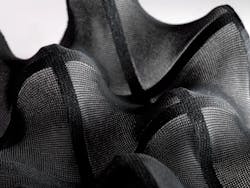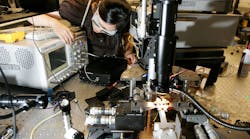Shape-morphing systems, also known as 4D printing, add the dimension of time to 3D printing. Using smart materials that respond to external factors such as heat, light, moisture, electric current or pressure, objects created through 4D printing can alter their shape or properties. Picture a fabric that seamlessly adapts its breathability according to humidity levels or a plumbing network that flexes and contracts in sync with temperature changes.
Hubs reached out to experts in the additive manufacturing (AM) industry, including thought leaders, journalists, and enthusiasts, to explore the possible impact of shape-morphing systems on various industries. Here are their insights on the future direction of the market.
Healthcare
In healthcare, 4D printing offers the prospect of adaptable implants that can conform to a patient's body, as well as precise drug release mechanisms. Hydrogels with stimuli-responsive properties are already being developed for targeted drug delivery, detecting vital signs, and releasing medication accordingly. This technology could prove crucial for patients in need of timely medical intervention.
According to Robert Jones, a manufacturing engineer at Nissha Medical Technologies, “This technology can be used for controlling the release of a drug in the body with extreme precision.”
Aerospace
The aerospace industry can benefit from shape-morphing components, enabling aircraft to optimize performance, fuel efficiency, and adaptability to different flight conditions. For instance, 4D-printed drone wings capable of bending in response to stimuli have shown significant efficiency improvements. The versatility of 4D printing materials also holds promise for lightweight and flexible structures in satellites and spacecraft, streamlining space missions.
Adrian Nordtomme, Director of APAPTA LTD, predicts that 4D printing’s benefits will also impact other transportation industries. “This is especially relevant for the automotive, aerospace, and maritime industries, where there’s a keen interest in manipulating structures for aerodynamic purposes,” says Nordtomme.
Furniture
The concept of self-assembling furniture can become a reality with 4D printing, where consumers can witness their furniture taking shape effortlessly. This innovation not only saves time and effort but also makes household goods more accessible. Francesco Rivalta, Mechanical Engineer at Hubs, thinks shape-morphing systems could revolutionize the furniture industry. “This could be the next big thing after the concept of flat-pack furniture. Imagine assembling a chair by using nothing but heat from a hair dryer.”
Packaging
4D printing can enable dynamic packaging that adapts to protect contents from elements. It also has the potential to automate the packaging process by adjusting to external factors, reducing labor, costs, and time associated with conventional packaging requirements.
According to Robert Jones from Nissha Medical Technologies, “It could be possible to make a type of packaging material that is stored in flat sheets, but when a product is placed on it and exposed to either light, heat or some other stimuli, it would self-wrap.”
Apparel
Shape-morphing systems open up possibilities for adaptive clothing and accessories in the fashion industry, where personalized fit, cushioning, insulation, and breathability can enhance performance and comfort. Brands such as Adidas are already developing shoes that adapt to users’ foot shape and movement patterns, providing superior fit, cushioning, and insulation.
Robin Brockötter, resident 3D printing expert at Hubs, emphasizes the transformative potential of 4D printed textiles in both design and functionality in the fashion industry. “Imagine a coat that adapts to the cold by becoming thicker or hiking gear that increases its breathability when exposed to sweat.”
The Shape of Things to Come
The MIT Self-Assembly Lab, in partnership with Stratasys and Autodesk, leads the cutting-edge research in shape-morphing systems. Over the past years, significant strides have been made in the development of self-assembling and shape-shifting materials, showcasing their immense potential across various industries. However, these remarkable innovations merely scratch the surface of what lies ahead as technology continues to mature.
Alexandru Tilita, President & CEO at 3DK Tech, says that adoption will be the most significant challenge for shape-morphing systems. "The technology could really help enable new concepts, however, finding the industrial application is key to its wider adoption. Transformation can only happen if adopted by key players in the market and if it can be scaled up in a significant way. I expect 4D printing will only have a true impact in the next 10 to 15 years." In the meantime, much like the technology itself, engineers can work to adapt to a changing landscape to push the boundaries of what's possible.

















